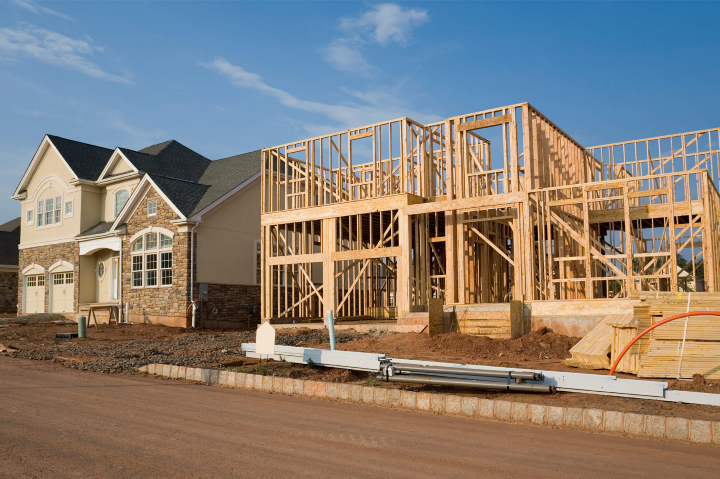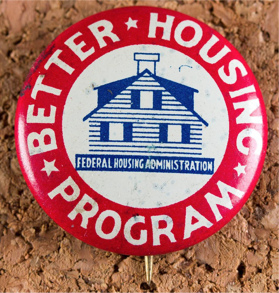Physical Address
304 North Cardinal St.
Dorchester Center, MA 02124
Physical Address
304 North Cardinal St.
Dorchester Center, MA 02124

The adoption of zoning as a means of preventing external costs led to inefficient use of land and caused many individuals to suffer great unfairness.

Subsidies to transportation tend to lengthen supply and distribution chains. Large corporations are artificially competitive against smaller, local firms.
Why is the rent so damn high? And why does it take hours to commute from cheap, plentiful housing to modern economy jobs? If you are living in a big city in America, you likely face this problem. And it isn’t just an American problem: From Ireland to New Zealand to The Philippines, the rent/commuting crisis is hitting the 21st century hard, right in the big cities where most of the economic growth is coming from, and where most of the jobs are. Meanwhile, in the economically blighted regions of America, everything seems to be falling apart, with lead in the tap water, crumbling roads, and municipal bankruptcy for thousands of towns and cities a very real possibility. But it doesn’t have to be this way. There are a few cities that seem to have figured out how to match a futuristic tech economy with futuristic transit and housing for the masses. And there are many small towns around the world that don’t face insurmountable backlogs of infrastructure repairs. What are they doing different? Why is the price per square foot for living space in Tokyo a third of what it is in Boston or San Francisco? Both cities have similar incomes and geographic constraints. Why is it an enormous scandal in Japan when trains leave a few seconds off schedule, while in America it is normal for your bus or train to be an hour late or never show up at all? Chalking this up to cultural differences is an easy explanation, and may have some weight, but I submit that the underlying laws of human economics do not vary based on culture, and there is much that we can learn from looking abroad. For Americans, the story begins in the nineteenth century when most of the country’s infrastructure […]
Coauthored with Emily Hamilton Last week, the autonomous vehicle company Waymo began testing cars in Chandler, AZ with no employees sitting in the front seat. While Waymo is busy creating systems of vehicle-mounted sensors that allow cars to safely navigate existing urban infrastructure and obstacles, some cities are pursuing plans to build “smart streets” that broadcast information about roads and potential hazards to autonomous vehicles. The American history of auto-centric infrastructure demonstrates that building specific infrastructure for autonomous vehicles may have long-lasting negative consequences. Waymo’s cars rely on both detailed maps and car-mounted lidar sensors that “see” the world around them in order to follow their route and to to avoid collisions. While the current technology is very safe, car-mounted sensors remain imperfect. As Tim Lee points out, there are reasons that Waymo launched in Chandler: its sunny weather, wide streets and minimal pedestrian traffic. Fully autonomous vehicles will need even better sensors than those that are currently available to drive safely in snowy conditions and in places with less regular streets that may confuse a vehicle’s sensors. Some analysts have advocated for publicly-provided smart streets and smart intersections that could limit the need for vehicle-mounted sensors and, perhaps, speed the adoption of autonomous vehicles. My colleague Brent Skorup has this view: Car-mounted sensors often confused by road materials (a shift from dirt to gravel or asphalt), reflective buildings, bridges, or even the weather. Roadside sensors not only mitigate these problems, but also reduce the computing load on car-mounted systems, because the vehicles have to make fewer snap decisions. There’s a way to get this information to vehicles quickly and accurately. Just as lawmakers and city planners started laying asphalt, installing streetlights, posting speed limits, and zoning property to accommodate Henry Ford’s cars, we need to design roads and infrastructure […]
My last post, on urban geographic constraints and housing prices, led to an interesting discussion thread. The most common counter argument was that because dense cities are usually more expensive, density must cause high cost. But if this was true, cities would become cheaper as they became less dense. Most American urbanized areas have become less dense, not more, over time due to suburban sprawl. Even where city populations have grown, much of that growth has been in areas that where undeveloped a century ago. Thus, the developed part of even growing cities were, I suspect, more dense in 1917 than than they are today: for example, Manhattan’s population peaked at 2.3 million in 1910, about 40 percent more than its current population. So rents should have come down. Did they? Apparently not. The Census date has statewide data showing that rents rose pretty much everywhere in real terms over the late 20th century. In the District of Columbia, real rents increased from $346 to $612 in real dollars between 1950 and 1990, even as the city was losing population and the region was de-densifying. If Washington is typical, it appears that lower density and higher rent went hand-in-hand.

Our tax code favors suburbia. Homeownership, greenfield development, and sprawl receive preferential tax treatment, and the market responds to incentives built into the code. As a result, a disproportionate amount of capital flows to those investments. In many cases, it has been an unintentional side effect of pursuing other goals. The combined effect is that our tax system plays a huge role in shaping our communities. Its influence is an important factor to understanding how residential design in the US became what it is today.

The government exercises tremendous power over residential design in the US. Its influence is nearly invisible, because it works through complex financing programs, insurance incentives, and secondary markets. These mechanisms go unnoticed, but their effect is hard to miss—they remade the United States into a nation of sprawling suburbs. This is the second post in a series about government policies that encouraged suburban growth in the US. You can find the first post here. What image springs to mind when you picture “federally subsidized housing”? Most people imagine a low-income public housing tower, a homeless shelter, or a shoddy apartment building. Nope—suburban homeowners are the single biggest recipient of housing subsidies. As a result, suburbs dominate housing in the United States. For decades, federal finance regulations incentivized single-family homes through three key mechanisms: Insurance, National mortgage markets, and New standards for debt structuring The housing market hides these details from the typical home buyer. As a result, most people are unaware of these subsidies. But their effects are striking—they determined the location and shape of development across America for generations. A New Deal to restore the housing industry Debt has a negative connotation these days. Credit cards, student loans, and auto loans are the anchors that keep many Americans in debt for most of their life. Meanwhile, we view mortgages very differently—they are seen as an investment, a symbol of adulthood, and a sign of financial stability. This was not always the case. In the early 1900s, mortgages were just like any other kind of debt. Nowadays payments are spread out over decades, but back then they came due all at once after a few years. Most people didn’t have enough cash at the end of the term. It was standard to pay back some and negotiate a new loan for […]

This is the first article of a five-part series on suburbia in the United States. In primary school, one of my friends lived in a duplex. This fact blew my mind. To my inexperienced 7-year-old mind, a duplex barely registered as a house. Her family shared a driveway with their neighbors, and their yard was tiny. It was the first house I’d ever seen that shared a wall with its neighbors. I’d seen apartments of course, but in my mind those were temporary, for people who who were saving up to buy a “real” home. I couldn’t understand that some people might actually prefer to live in something besides a private home, because I’d never come across it before. Median income in American cities tends to rise at about 8 percent per mile as one moves away from the business district. My mental model of the world was pretty typical for an American child brought up in a single-family home. It’s easy to see why—US residential development is dominated by suburbs, and home ownership is touted as the ultimate symbol of prosperity. Other types of dwellings tend to be for young people starting out in life or low income households unable to afford a place of their own. The popular image of the American Dream includes a white picket fence and a car, not an apartment and a subway pass. This is in stark contrast with most other countries. The French word for suburb is banlieue, and it has come to connote poverty and social isolation, because that is where immigrants and the poor tend to live. They’ve been known as “red suburbs” because of their tendency to vote Communist. Meanwhile, the wealthy live in the city center. In South Africa, the inner city is reserved for the privileged white […]
Land-use scholars have offered a variety of policy proposals that attempt to identify institutional reforms to reduce the incentive for homeowner NIMBYs to protest development. For example, in a 2013 paper law professor David Schleicher proposed a policy called Tax Increment Local Transfers (TILTs). When a municipality permits a new development, the new construction will increase its tax base by an amount called the tax increment. Schleicher suggests that the tax increment could be transferred to NIMBY homeowners to buy their support for new housing. But homeowners aren’t the only vocal opponents to new housing. Anti-displacement activists are also prominent opponents to new construction. What if we also dedicated TILT revenues to anti-displacement causes? Making new housing construction feasible in the cities with the best job opportunities is of serious importance for economic opportunity and mobility. Research by Peter Ganong and Daniel Shoag (covered here by Sandy and me and here by Matt Yglesias) demonstrates that restricted housing supply in the U.S.’s most productive cities has resulted in less income mobility over the past 40 years. Ganong and Shoag explain that during the high-mobility period of 1940 to 1960, people moved from low-income to high-income states. In the process, the labor forces in high-income states grew, putting downward pressure on their wages relative to low-income states. As income increased across all states during this time period, it grew fastest in the lowest-income states. Ganong and Shoag show that the negative relationship between income growth rates and average income across states has broken down since 1980 with the rise of land-use regulations that have severely limited housing supply growth in the country’s most productive cities. Specifically, they find that if income convergence had continued at its 1940-1960 rate through 2010, hourly wage inequality would be eight percent lower today. While homevoters are responsible for the lion’s […]
Market Urbanism may soon have a hearing in the Supreme Court. Two of my colleagues at the Mercatus Center, Sandy Ikeda, half a dozen other professors, and I argue that the Court should take up the case 616 Croft Ave., LLC, v. City of West Hollywood. The case is an opportunity for the Court to determine whether inclusionary zoning violates its standards for legal exactions from developers. Inclusionary zoning requires developers to rent or sell some units in new projects at below-market prices. The Court has established that local governments can only require benefits from developers when these benefits offset a public nuisance from the project. Inclusionary zoning fails this test. The facts of the case could have played out in many American cities. Real estate developers Shelah and Jonathan Lehrer-Graiwer purchased two single family homes that they replaced with 11 condo units. West Hollywood’s inclusionary zoning rule required them to either make 20 percent of the units in their new project available at below-market prices or to contribute $540,000 to the city’s affordable housing fund. The Pacific Legal Foundation is representing the Lehrer-Graiwers suit. They have petitioned the Supreme Court to review earlier decisions from California courts that upheld West Hollywood’s policy. West Hollywood’s inclusionary zoning policy states that its purpose is to “off-set development impacts” that new housing construction causes. This justification is based on the false assumption that new housing development raises housing prices by replacing older, cheaper housing with newer, more expensive housing. This fallacy may seem reasonable at first glance. New construction is often more expensive than the older homes it replaces. But as these once-new houses age, they become affordable to lower-income residents. New construction is the only way to increase housing supply, and new units have the potential to become market-rate affordable housing over time. Housing economists call this process “filtering.” One estimate puts the […]